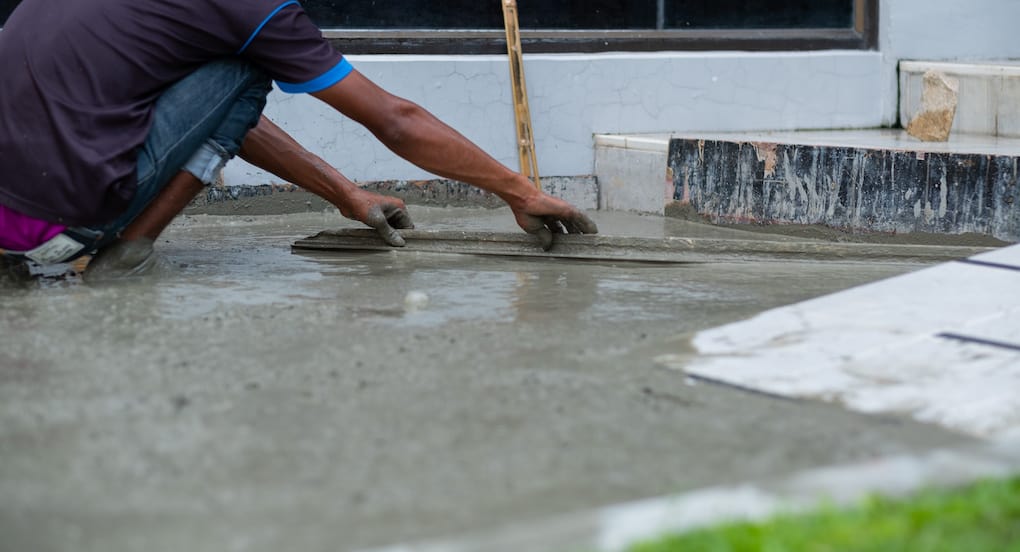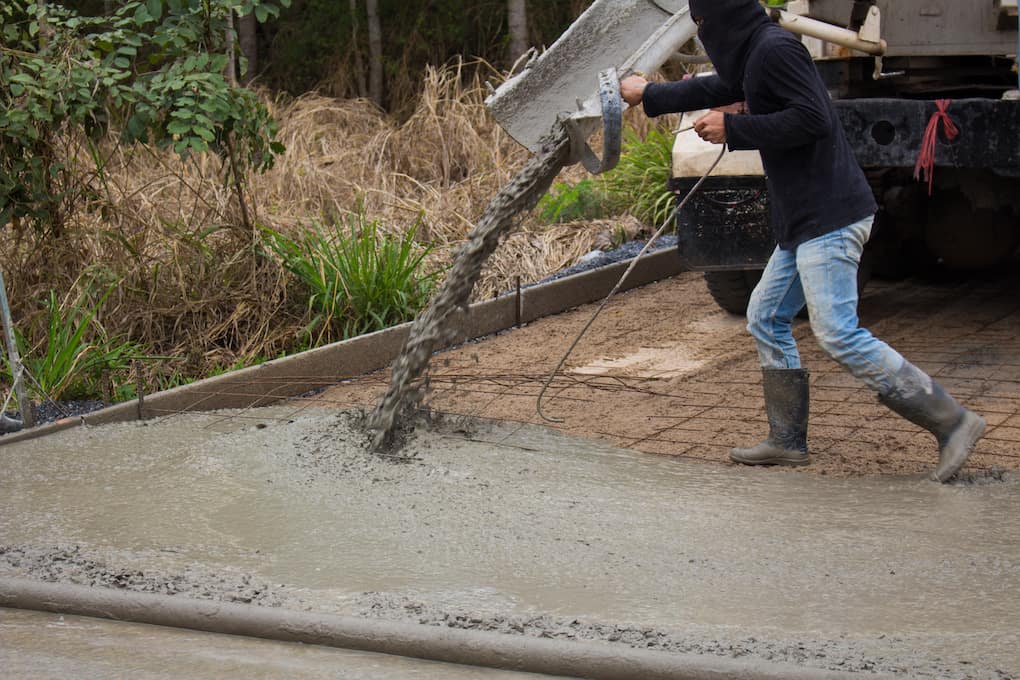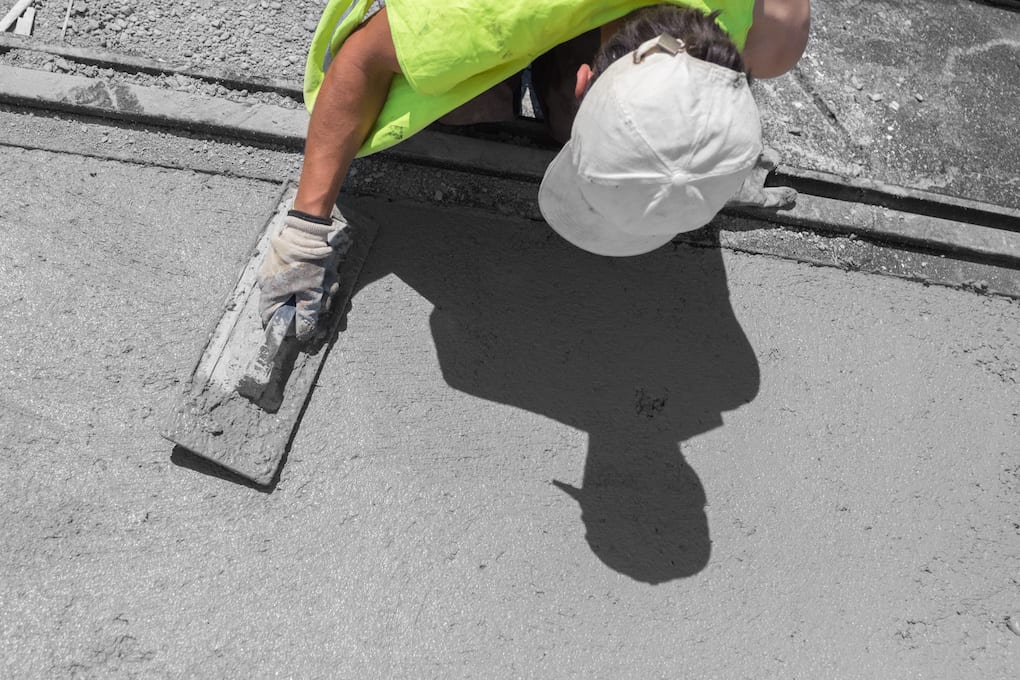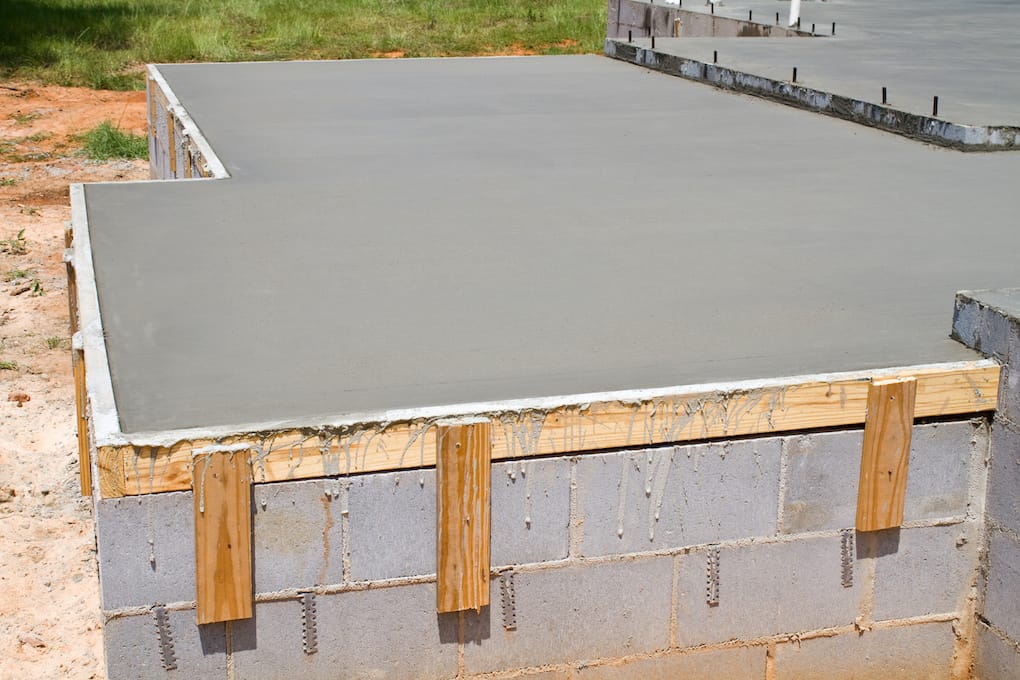You’ve got everything lined up, the concrete is getting mixed, and then the winds start to shift, and the forecast changes for the rest of the day. That glimmer of hope you had that you’d be able to get the concrete poured and set up before the rain hits is gone.
That doesn’t mean you’re stuck and out of work for the day. Pouring concrete in rain can be done.
You don’t need anything too special to do it either—just some simple precautions to make sure it can stay mostly dry while it’s setting up. We’re here to give you all the tips and tricks so that you can feel confident if it starts to rain when you need to pour concrete.
Problems with Pouring Concrete in Rain
While you definitely can pour concrete while it’s raining, it’s important that you understand some of the problems that can be expected when you pour concrete in the rain.

Not Preparing for the Rain
The number one thing that goes wrong when it comes to pouring cement in the rain is that you’re often not able to prepare for the rain. This can leave you scrambling and having to try and dry the concrete so that it doesn’t wash out. Concrete that hasn’t had the proper amount of time to set up before rain is never a good thing.
Too Much Moisture in Concrete
Concrete is already a mix of a few different ingredients—one of those important ingredients in water. But not having a precise amount of water can cause the concrete not to turn out the way it’s supposed to, and in extreme cases, it means the whole job is a bust.

Weak Top Layer of Concrete
A weak top layer of concrete happens when water pools atop the concrete before it dries properly. This top layer needs to be strong if it’s going to keep from chipping or peeling off over time. Of course, concrete will chip in some circumstances either way, but weak top layers will basically peel off if they aren’t taken care of.
The best way to avoid problems with concrete and to pour in the rain is to properly prep for the possibility of rain.
Steps for Pouring Concrete in the Rain
While avoiding the rain altogether is the easy option and the best option in almost every circumstance. But, sometimes, you need to get the job done, and when that’s the case, these are the steps you want to take.
Be sure to be very thorough when pouring concrete in the rain because you’ll want to make sure it turns out right because fixing it after it’s all set up is never an easy job.
1 Prep the Site
If there’s rain in the forecast and you can feel the storm clouds looming, you’ll want to prep the site for the rain long before you start pouring. Prepping includes making sure you have tarps or plastic sheets to keep the concrete and pour site as dry as you can before and after the fresh pour.
When walking the pour site, make sure there are places for the water to run as it drains around your concrete. If water pools under the fresh pour, it’s sure to ruin your finished product.
2 Don’t Pour in a Downpour
A slight mist or sprinkle won’t hurt your concrete, but if it’s truly raining cats and dogs, then you’ll want to hold off until the rain slows a bit. However, if you can keep it covered from all rain, that’s ideal, and it will allow you to pour in any amount of rain.
3 Dry the Top
After you’ve poured the concrete, you may notice standing water on the fresh concrete. It’s important to squeegee or brush off any surface water on the concrete. This water will cause issues with the surface of the concrete if it’s neglected.

4 Cover Up the Job Area
When you’re confident there isn’t any water on the surface of the concrete and there’s proper drainage around the concrete, you can start covering up the job area and ensuring that no further water can get onto the concrete.
Be sure to check back in from time to time so that water doesn’t pool under the tarps or on top of them.
5 Let it Cure
Lastly, you’ll be able to let the concrete cure. This process takes nearly 48hrs and in many cases, especially when pouring in the rain, you’ll want to leave it for 30 days before driving on it.
If you’re working with Goodmanson, we’ll be able to tell you a more accurate cure time for your concrete depending on the weather, season it’s poured, and location.

Tips for Pouring Concrete in the Rain
If you know for sure you’ll be pouring in the rain, here are a few quick tips that will help you prepare the site for it.
✅ Cover the slab site to keep the ground from becoming saturated
✅ Get good water to mix ratio so that it doesn’t take any extra time to dry
❌ Don’t work the water into the concretes surface
❌ Don’t throw dry cement mix over wet concrete to soak up water
✅ Be sure to check back in on the concrete to keep removing any excess water
How Long Should Concrete Dry Before it Rains
If rain is in the forecast for the days or hours after you expect to finish the job, you shouldn’t have to worry. As long as the concrete is given 4 to 8 hours after mixing and finishing to set up, rainwater won’t affect it nearly as badly as it could.
Some concrete mixes will actually benefit from rainwater on the surface because it’s beneficial in aiding the hydration and curing process. But this isn’t until after the 4 to 8-hour mark.
Tips for Fixing Rain-Damaged Concrete
When the skies open unexpectedly, and you’re pouring concrete in the pouring rain, your best option is to let it be and fix it after. You can, of course, squeegee excess water off, cover the concrete to prevent more water damage, and brush it out again. But, adding more mix or dry mix to the pour will likely only cause more problems.
Some of the problems caused by the concrete being too wet include:
- Dusting
- Surface scaling
- Cracking and shifting.
The best way to avoid these problems is to grind the surface of the concrete and repour just that much after it’s finished setting up. Ideally, you’ll already be ready for rain if it’s coming, and none of these problems will present themselves.
If you’re in Minnesota and need help with concrete or paving, the Goodmanson Construction team is here to help you every step of the way. We’ve been developing concrete relationships with our communities and employees for almost 51 years, and we’re ready to keep it up for another 50 years.
You can reach out today to get a free estimate and learn more about our residential and commercial services.

